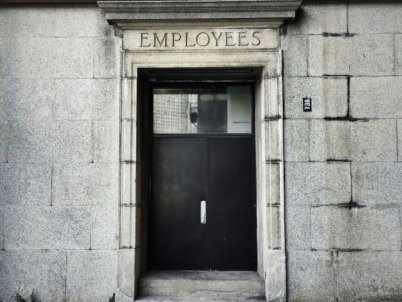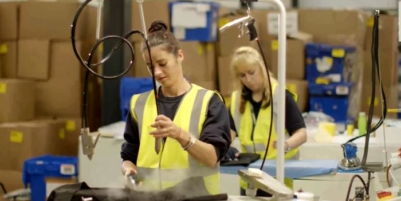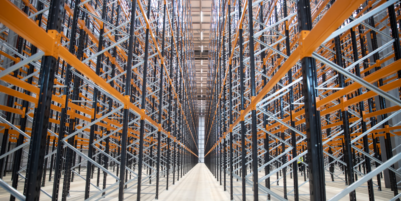-
BLACKOUT TECHNOLOGIES TARGETS TELEMATICS-INTEGRATED MOBILE DEVICE BLOCKING TO COMBAT SMARTPHONE DISTRACTION - 16 hours ago
-
OpenADR Alliance announces first OpenADR 3.0 certified products with EVoke Systems, E.ON Energy and Universal Devices - March 25, 2025
-
Growing fulfilment and contract packer appoints new Managing Director - March 25, 2025
-
When is it time to invest in a WMS? Understanding the key trigger points - March 25, 2025
-
eCapital helps Vantage Recruitment on its journey to financial success - March 24, 2025
-
Hugo Beck Celebrates 70 Years of Packaging Innovation with Open House Events - March 20, 2025
-
PROLOG FULFILMENT SUPPORTS LUNA DAILY’S COMMITMENT TO BETTER BODY CARE FOR ALL WOMEN - March 19, 2025
-
Motion Ventures launches largest-ever maritime tech fund at $100M to meet the industry’s new pace of adoption - March 18, 2025
-
ITD GLOBAL APPOINTS GROUP CHIEF REVENUE OFFICER - March 17, 2025
-
SURECAM TEAMS UP WITH ENTERPRISE FLEX-E-RENT FOR VEHICLE REPAIR & MAINTENANCE CONFERENCE - March 14, 2025
In a world full of ‘unknowns’, agility, flexibility and responsiveness are key for a successful, competitive supply chain. But how can these essential traits be translated into physical reality? Andy Kaye, CEO of Visku explains.
Supply chain planning has become far more difficult. There are many more uncertainties and plenty of ‘unknowns’. But there’s a smart way forward.
Supply chains increasingly need agility to be planned in, which has big implications for a firm’s logistics network, its warehousing and its storage requirements. Even the largest corporations now look hard at the risks involved in committing to a traditional seven- or ten-year lease on a warehouse. Beyond, a core baseline of ‘permanent’ storage, demand is increasingly for flexible, short-term space.
Physical logistics networks now need to be lean and agile, and storage space must flex to meet demand. However, there’s a critical balance that must be achieved between ensuring efficient fulfilment and supply, and keeping costs, along with risk, to a minimum. To achieve this, a clear focus on sustainable asset maximisation is necessary.
So how should businesses assess their supply chain needs and then build in the necessary agility in the most cost-effective way, with minimum exposure to risk? Can retailers flex at peak to boost performance and still de-risk their supply chains? What part does cost-to-serve analysis play in revealing the pain points and what solutions can businesses deploy to stay agile and responsive?
Beyond the unknown
Supply chain planners increasingly find themselves facing many unknowns. Some events are truly out of the blue – ‘sideways in Suez’, or a drought affecting the Panama Canal. Others, such as the introduction of LEZs and other traffic regulations, or the need to nearshore/onshore supply or manufacturing, may come with some warning, but are still near-instantaneous over traditional supply chain planning timescales.
But just as important as these macro issues may be, complex issues relating to the costs-to-serve for a whole range of products, perhaps across multiple channels, may accumulatively determine how well a business performs. In many retail businesses, the costs-to-serve are treated as fixed overheads and are allocated evenly across orders, when in reality they vary according to the characteristics of each order. This may be channel, geography, the nature of the goods, or even the behaviour of the customer. They also change over time, and not necessarily uniformly.
Take a given order, do you know what it’ll cost to fulfil that order? More importantly, do you know what margin you’re making? In fact, are you making any profit at all? These are questions that many retailers may find difficult to answer.
Clearly, supply chains cannot be planned for the really big ‘unknowns’. But what can, or must, be done, is to plan in the ability to be agile and flexible, whatever the future throws up. For warehousing, that means viewing the use of flexible and temporary space as an essential core component of the strategy, not a short term, tactical ‘fix’.
De-risking warehousing
Of course, there has always been a demand for short-term space. Some of this is planned and predictable – businesses may need to build stockpiles against a seasonal peak, or in advance of a new product launch, for example. Temporary space may also be needed while companies upgrade their permanent facilities or when testing a new market geography.
And while long-term leases come with a lower ‘headline rate’ in pounds per square foot, that’s not the whole story. They’re a balance sheet liability, incurring stamp duty, fitting out costs, liability for dilapidations, and could become operationally redundant during the life of the lease. Not good, if there are onerous surrender clauses.
This is a problem for smaller businesses that may not have the necessary balance sheet, or governance, strength to support long term leases. It may also be a consideration for larger companies with leases coming to the end of their term. Short term leases come with a premium, but with a lot less risk.
Transforming a supply chain and its supporting logistics network into an agile, and responsive arm of the business requires planning at three levels. Firstly, there is analysis of the physical logistics or operational infrastructure. Where should warehouses be located and of what size? What transport modes are appropriate, where should vehicle fleets be based, and what types of vehicle are required? How do these optimise in different scenarios?
Know your Cost to Serve
However, infrastructure analysis forms only one element in an end to end ‘cost to serve’ analysis. Inventory forecasts based on sales profiles (or a variety of different likely profiles) and the required service levels inform the amount of stocking space that will be needed. This may be by geography and by time period, which in turn feeds into modelling of the total cost to serve. That analysis offers a guide to the optimal balance of flexible and permanent space needed in the system.
Thirdly, there’s planning to make the best and most flexible use of existing and future space. This includes making optimum use of human assets, and also likely, consideration of the degree and type of automation / robotics that may be beneficial. That involves looking at the whole business, the profiles of skus that will be moving through the system – and how these might change – to ask how and when automation will be relevant.
A further question may be the extent to which any automation is itself flexible – not just in the face of changing requirements on a given site, but whether it could readily be relocated to new or different facilities. It may be fairly simple to reinstall a network of Autonomous Mobile Robots (AMRs) on a new site, but a system of smart conveyors, less so.
Partnering for transformation
Transforming a supply network into an agile, responsive organ of the business takes knowledge, skill and a special kind of partnership that can deliver physical change.
In the autumn of 2023, Visku was created – through the union of Bis Henderson’s Consulting and Space businesses – to respond to these strong market demands for a more imaginative and informed approach to creating flexible, agile supply networks, complete with optimised physical logistics solutions.
We hold a market leading position in cost-to-serve analysis, benchmarking, warehouse automation and logistics network design – combined with an extensive network of nationwide partners that deliver short-term warehouse space, as well as expert, tailored solutions.
Designing the flexible use of space into a warehousing equation is one thing – actually securing appropriate, geographically well-placed space at short notice or for the short term is another. We support more than 200 customers and hold 500,000 pallets under management across the UK, with over 16 million sq ft of warehousing space available on a highly flexible basis, with no onerous contracts or long leases.
Finallly. The future is digital. We can easily book a family into a short holiday let in the capital city of our choice with a few keystrokes. How hard should it be to park a hundred pallets for three months? Watch this space.
For more information on supply chain agility go to www.visku.com

































